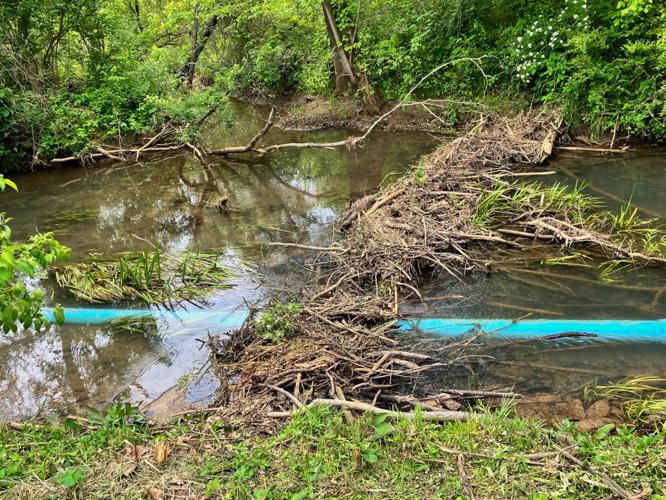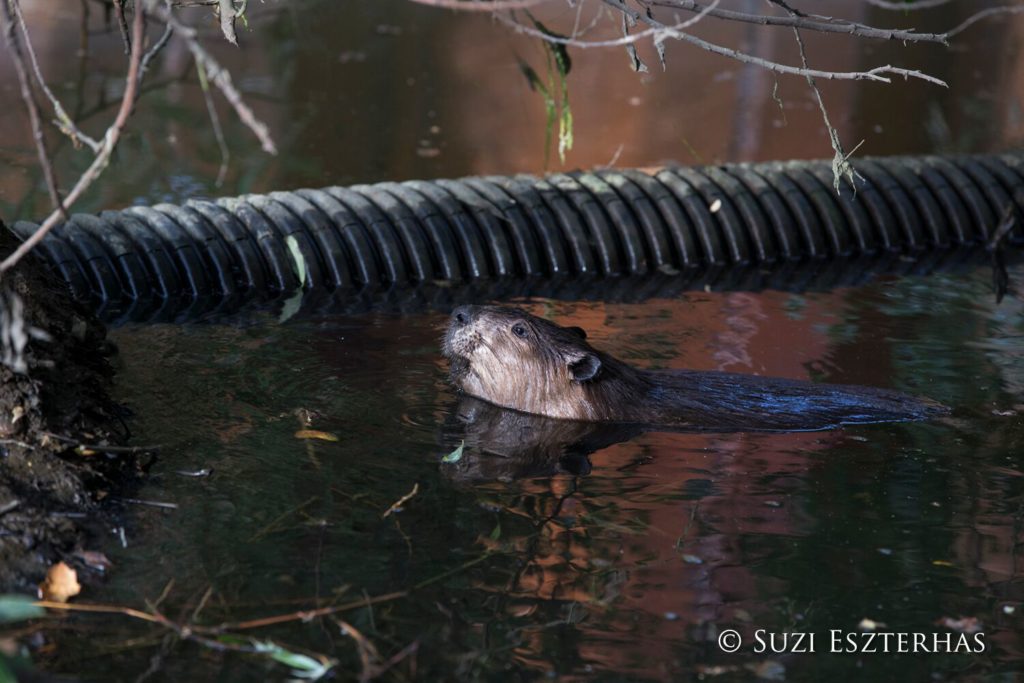Month: May 2023
A friend just sent this my way…
I was very interested to see this come across my feed this morning. Lots of beavers are terminated in these areas because of damage to weirs. It’s a nice video that explains much. Not sure it meets Mike and Skip’s exacting standards?
As an addendum allow me to note that as of yesterday morning I am officially no longer required to wear the Frankenstein boot of healing broken bones. They are officially mended and now I just have to work on the sleepy muscles,
This was a surprise, even for a girl like me who is usually braced for anything,

Conservation District Installs Levelers in Local Beaver Dams.
Conservationists and beaver aficionados have reason to celebrate — the furry, water-loving animals are making a comeback in Blount County.
“Their population has been coming back and growing,” Julie Konkel, watershed coordinator for the Blount County Soil Conservation District told The Daily Times. “That means we have dams on a lot of the streams and creeks around the area.”
Those dams promote a healthy ecosystem and even help manage stormwater, but there’s one major drawback:
Beaver dams, no matter how natural, change water levels. In the wild, the influx of water creates wetlands and helps foster the local ecosystem. But in an urban area, rising water levels can threaten infrastructure, business and the livelihoods of the people nearby.
The solution is called a beaver pond leveler. It’s essentially a length of pipe that runs through the dam from one end to the other. A cage caps the intake to keep beavers or other debris from blocking the flow of water. The result is the beavers get to keep their dam, and more water is able to flow uninterrupted, reducing the potential flooding.
“It’s a way to coexist and enjoy the benefits,” Konkel said.
WOW!!! Go Julie! The illustration shows a Clemson pond leveler so I dearly hope the paper found that and she’s not using that illfated design, but wowwwwwwwwwwww Tennessee!
 She already has installed multiple levelers around the county, although she admitted she’s not an expert on the subject. She feels there is a growing desire among the public to live alongside wildlife like beavers and appreciate them without getting rid of them.
She already has installed multiple levelers around the county, although she admitted she’s not an expert on the subject. She feels there is a growing desire among the public to live alongside wildlife like beavers and appreciate them without getting rid of them.
“Along Pistol Creek, the greenway is right there,” Konkel said. “In a rain event, beaver dams can intensify flooding to the point that the greenway is not usable. And then there’s some instances where the beavers actually have about 11 dams, and they have created an entire backwater wetlands system over the years. As they’ve moved upstream, it’s really affected businesses.”
The alternative would be to kill the beavers or trap and relocate them to another area, but Konkel said removing them just leads to more beavers coming to take their place.
There are several kinds of levelers in existence, although the basic principle is the same for all. Konkel got plans from the Beaver Institute — a nonprofit organization that works to restore ecological balance between beavers and humans. The cost of installing one can range from under $1,000 to $2,000. Konkel has been able to construct some using grant money, while other times private citizens will pay for one on their property. She’s partnered with the city of Maryville’s grounds maintenance department to help with installations.
One of the benefits, she said, is that the levelers use common elements that are often involved in other projects. That meant Maryville has been able to save money by reusing extra materials from another effort on at least one occasion.
“I’ve done four or five now, and I have one pending,” Konkel said. “I keep getting requests. I’m really becoming more familiar with these systems and it seems like as people learn about them, there’s a rapidly growing demand.”
Wow. Just wow, Way to go Julia!
I’m so confused. Yesterday I presented on beavers to the ContraCosta Fish and Wildlife Committee. They have been staunch supporters of the festival for years, so I was thrilled to be invited. The talk went well. Technology went well and I remembered all my lines. I even hearsdj some appreciative laughs.
Then I finished and opened for questions and the chair said, “I couldn’t believe Martinez spent all that money and that thing just blew out and floated away.”
.?
Meaning, our flow device. Which I just finished saying worked for ten years and saved us money. That failed.
I was pretty surprised and not sure I heard him right. “What? I didn’t quite hear that?”
To which he repeated “that wasted money on the thing which just blew out and didn’t work”.
!!!
And I was stunned. What had he heard? And from whom.? If he had heard something that made him think I was lying why give the festival grants year after year? Why give funds to liars for festivals?
I said that when it’s was first installed it blew out and the next morning staff had helped Skip stake it in firmer, and that in one storm years later the filter had come lose and a citizen retrieved it and staff reinstalled it. But that truly it had worked and done its job for a decade, as he could see by that photo of the beaver next to the pipe which was taken by Suzi Eszterhas the photographer from Ranger Rick magazine in 2015.
He didn’t say anything else.
I’m so confused.

Okay its nice. But Seriously? If you’re going to invest in nature wouldn’t you want to invest in an aquatic animal that improves streams, helps fish, increases frogs, saves water and creates habitat for other animals? I mean just from a ROI perspective?









































